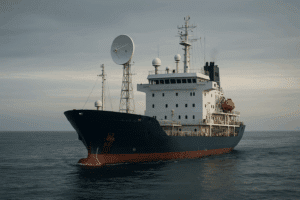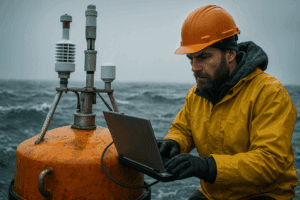The Current Climate and its Impact on Our Oceans
The Intergovernmental Panel on Climate Change (IPCC) recently released an ocean-focused report which goes over how human activities are affecting ocean health.
The report highlights that human life depends on our oceans, yet they are in increasing danger. Oceans have an extremely important role in controlling climate change and regulating our global climate temperature. The ocean, essential to life on Earth, provides us with food and water, energy, well-being, tourism, trade, culture, and maritime transport.
However, the ocean is taking a large brunt of global warming: Arctic Sea ice is disappearing, sea levels are rising, and the ocean absorbs excess heat and carbon for our planet. Since 1993, the ocean warming rate and heat intake have doubled, and marine heatwaves have doubled in frequency.
The carbon emissions caused by global warming activities have caused ocean acidification, oxygen loss in the ocean, and there have been ecosystem impacts.
The ecosystems in the ocean are complex and interconnected; therefore, if one ecosystem is severely disturbed, as the arctic sheets, due to climate change, then so is the entire ocean. Ecosystem impacts include:
- Negative species impacts such as species in lower elevation levels migrating upward
- Species in polar regions have changed seasonal activities
- Marine species have changed their geographical range – so species interaction and composition of ecosystems are changing
- Warming and acidification are causing changes to ocean ecosystems, – spring blooms of plankton are earlier – the California current has lost oxygen which is changing its ecosystem
- & Biodiversity changes
Essentially, climate change is a pressing issue, and we need to act together to help reduce greenhouse gas emissions and prevent further harm to our oceans.
On a positive note, in the fight to protect our oceans against climate change, Artificial Intelligence (AI) systems and technology have already made great advancements.
Your environmental monitoring at your fingertips!
Optimize your environmental monitoring, become smarter and more sustainable with a unified system that gathers all your environmental sensors & data in one place.
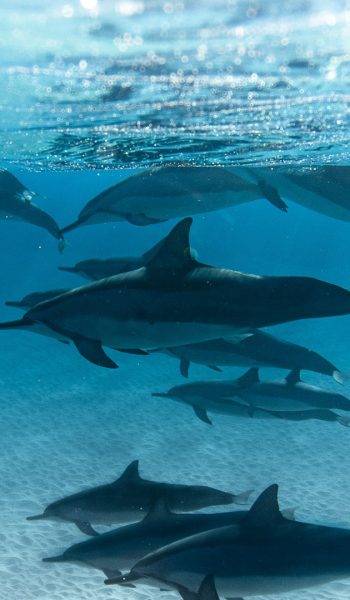
How Does AI Help Climate Change?
Artificial Intelligence is when machines and software are programmed to replicate human decision-making processes. Machine learning, a subset of Artificial Intelligence, uses advanced algorithms that can process a lot of data, recognize patterns, and learn to understand how different variables will impact each other. AI has the ability to help humans discover new solutions by using advanced data processing.
AI machine learning can thus help the fight against climate change through means of problem-solving, predictability, and forecasting.
Problem solving
AI machine learning leads to quicker problem solving, finding solutions faster than a human could, in turn helping to create sustainable practices for an environmentally efficient planet.
For example, Artificial Intelligence is a key component of Digital Twins (real-time digital models). A Digital Twin can, for example, help predict the precise amount of carbon emissions a vessel releases when docking at port. This data gathered thanks to AI can then be used to develop solutions that use less fuel and to study the impact it has on the environment.
Sustainable design, design reducing negative environmental impact and supporting the circular economy concept, also benefits from AI and Digital Twin use. With this augmented reality, a building, ship, port, or city can be designed with AI to understand the environmental impacts of building design before it is even built.
Forecasting and Predictability
AI machine learning also helps with forecasting and predictability. Since AI can process large amounts of complex data, it can help make predictions ranging from energy optimization to what will happen to our planet and oceans in the future if we do not reduce climate change. Thanks to predictability, tests can be done to see if solutions will work, and then if something is proved to be environmentally damaging, it can be prevented. As an example, a vessel route can be predicted to use the least amount of fuel possible, thus helping the climate by lowering environmental impact per route.
Supply and demand of energy can be forecasted with AI’s predictive power to optimize energy consumption. This type of forecasting allows average energy usage to be accurately estimated and predicted at different points in time. If on a certain day and time more ships are forecasted to be at port, resource allocation and energy consumption can be prepared. When the port is forecasted to have less activity, then energy and resources can be saved.
How AI Is Helping Our Oceans
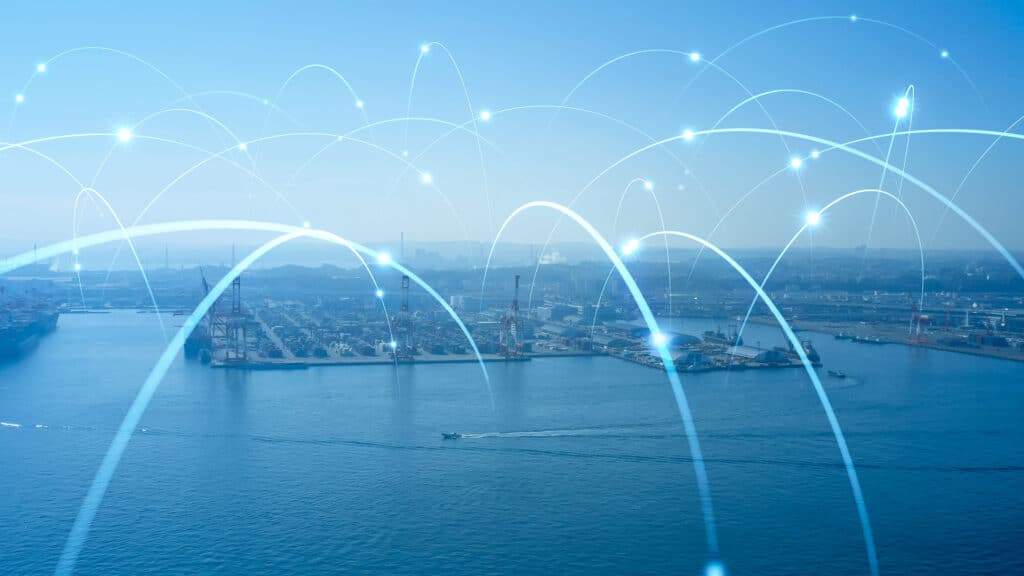
Seeing as AI is already making great advancements to fight climate change, it also can help reduce negative environmental impact via the maritime industry.
Shipping Industry
The shipping industry creates 3% of the world’s greenhouse gas emissions, and thus impacts our oceans. However, thanks to AI, these impacts can be less severe. AI can be used to optimize fleet use, fuel use, and to predict the best route and estimated time of arrival (ETA). AI also contributes to digitalized, smart ships which incorporate energy optimization.
For instance, at Sinay, we use advanced AI algorithms to track and calculate shipping routes that use the least amount of fuel usage with the Route Optimization Module. This module considers the different variables, like weather, trajectory, and shipping type, to automatically calculate the route using the least amount of fuel. The Sinay Consumption Prediction Module uses AI to optimize fuel consumption which helps the shipping industry to have a transparent view of fuel usage. Sinay also uses AI algorithms to predict a precise ETA for when ships will arrive at the port. This in turn helps ports to optimize resource allocation and reduce port congestion, therefore minimizing the environmental impact vessels have when at the port.
Ports
AI enables ports to lower their environmental impact on surrounding areas via virtual reality models. The maritime industry is already flooded with data; therefore, AI can be used to improve port logistics, efficiency, and track pollution.
Sinay recently partnered with Digital Twin company 3D Cityscapes to create Digital Twins for ports. Thanks to these Digital Twins, ports can understand the environmental impact from shipping and construction in real-time, can utilize port space and energy to its capacity, and can better coordinate logistics to prevent severe port congestion which reduces harmful emissions.
Detecting sea levels and impacts
AI can help to better understand rising sea levels and predict the consequences on our ecosystem if sea levels continue to rise. For example, it is already predicted that if sea levels continue to rise, people living in major coastal cities like New York and Shanghai will be displaced by 2100 – enabling human impacts to be studied in advance.
Marine life protection
AI is used to track and protect endangered marine life species. Whales, for example, can be tracked and mapped with their clicking noises. Areas of the ocean can then be protected from shipping routes, noise pollution, and water pollution.
To help protect marine life in the Mediterranean Sea, Sinay aggregates ocean data and then applies it to machine learning. Sinay also uses AI algorithms to detect and map cetacean species in the Mediterranean Sea by detecting their clicking noises with the Underwater Acoustics Module. This allows us to identify where endangered species live and where to avoid construction sites and noise pollution.
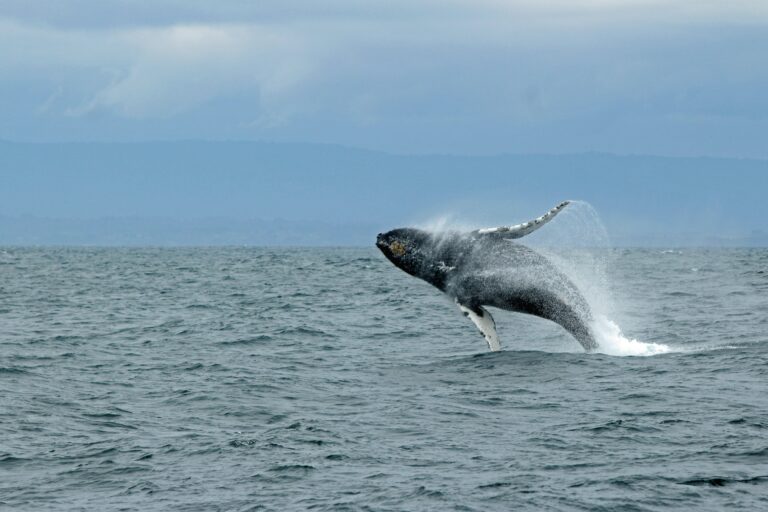
The above examples of AI being used to help our oceans in the fight against climate change are just a few examples out of the many that exist. Thanks to AI, new sustainable solutions are constantly being developed. Overall, AI helps fight climate change thanks to advanced problem solving, predictability, and optimization. It helps humans to calculate predictions and impacts instantly for what would take us many days, allowing us to fight climate change thanks to real-time data analysis.
At Sinay we are passionate about transforming ocean data into key indicators using advanced AI algorithms and machine learning. We are constantly improving our AI-powered algorithms and modules, motivated to reduce environmental impact all while increasing maritime efficiency.
Frequently Asked Questions About: AI AND CLIMATE CHANGE
Yes, AI helps reduce climate change thanks to its quick processing of advanced data, leading to predictability, forecasting, and real-time problem-solving.
Artificial Intelligence can help the environment by providing energy optimization, CO2 reduction, developing green solutions, and advanced prediction.
AI will make many processes more efficient through automation and self-learning capabilities. AI helps humans make more accurate decisions by processing large amounts of data in a short time.

